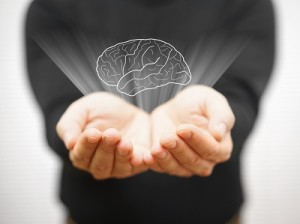- Calls to this hotline are currently being directed to Within Health or Eating Disorder Solutions
- Representatives are standing by 24/7 to help answer your questions
- All calls are confidential and HIPAA compliant
- There is no obligation or cost to call
- Eating Disorder Hope does not receive any commissions or fees dependent upon which provider you select
- Additional treatment providers are located on our directory or samhsa.gov
Expressive Therapies for Trauma and Eating Disorders: Research is On Your Side
Contributor: Deanna James, LPC, R-DMT of Castlewood Treatment Centers.

However, have you ever stopped to consider the research behind expressive therapies? Are they really important to your recovery from an eating disorder?
Let’s take a look at two short definitions, and then some solid, current research that helps makes sense of it all:
Evidence-based Treatment: Clinical treatment for a person based on the best-available evidence, and also incorporates patient needs and preferences and the clinician’s experience and judgment (for all types of healthcare, not just eating disorders)
Expressive Therapy: Using methods beyond traditional “talk therapy” to communicate feelings and emotions that otherwise may be difficult to express.
Expressive Therapies for Eating Disorders: It’s Brain Changing!
Ongoing research has shown that expressive therapy does more than improve communication and expression; it engages the entire brain in a way that helps someone with eating disorders adapt and change old patterns. Drama Therapist, Laura Wood at Castlewood Eating Disorder Treatment Center in St. Louis explains why it is imperative for her clients to take part in expressive therapy.
“Expressive therapy, such as drama therapy, can help coordinate specific areas of the brain and make positive changes. The scientific term for this is neural integration,” says Wood.
She adds, “One of the biggest hallmarks of eating disorders is the lack of neural integration that can make a person either too rigid or too impulsive in their thinking. Others experience overwhelming feelings of emotions that just make things worse. Neural integration means a person can respond in a more adaptive way.”
Neuroplasticity: Making Changes in the Brain:

Look at this as the “long and the short” of expressive therapies. In the short term, practicing yoga or taking part in drama therapy provides a rich way to feel physically and mentally better.
Current research shows that as these treatments continue, the deeper long-term changes set in, hard-wired into the brain.
This is powerful medicine! But not of the instant variety. Patience and professional help are key. Drama therapy and other expressive therapies are part of every person’s treatment plan when they come to Castlewood and other highly respected treatment centers, and are carried through the recovery process.
Ms. Wood and her Castlewood clinical colleague Christine Schneider discussed how drama therapy and neural integration help their clients with eating disorders. Their case studies and research1 appear in the January 2015 edition of the academic journal Drama Therapy Review. “We see just how important this is for not just eating disorders, but the associated problems that can be present, such as trauma,” stated Ms. Wood.
Bend It, Shape It! Expressive Therapies for Eating Disorders and Neuroplasticity
Another recent study using yoga therapy is by nationally known psychiatrist Dr. Bessel Van Der Kolk. Dr. Van Der Kolk and his team wanted to evaluate ways to address this disturbing statistic: more than 30% the 10 million American women with histories of interpersonal violence develop post-traumatic stress disorder (PTSD).
Here is what he found, and why his research puts yoga therapy even more at the front of treatment for those with eating disorders and trauma related issues:
- Often treatment for PTSD and other trauma symptoms aren’t fully helpful because they do not work on the “affect” (how someone reacts instinctively) or behavior
- The research study evaluated 64 women with chronic PTSD that had responded poorly to treatment in the past
- The study looked at how effective yoga therapy was as a new approach to helping these women
- Those who received yoga therapy (as opposed to those in the study who did not have this expressive therapy) made significant improvement2 in how they were able to tolerate the physical and sensory experiences of PTSD
Sound familiar to neural integration? Absolutely! Moving beyond the lack of neural integration and into a more adaptable, positive response.
Who Is at the Center of Care? You or your Therapist?

- These approaches are good science, not just a fanciful trend
- They take time, so you will need to be patient
- It is important that you participate because it is active therapy done with you as part of the team, and not something that is passively done “to you”
You (and your family and significant others) are very much at the center of care. You are also an essential and important part of the team, and much more (brain!) powerful than you ever realized!
Citations:
- Wood, Laura, et. al. Drama Therapy Review, Volume 1 Number 1, Setting the State for Self Attunement: Drama Therapy as a Guide for Neural Integration in the Treatment of Eating Disorders. 2015
- Kolk, Bessel Van Der. On Being with Krista Tippet. Restoring the Body: Yoga, EMDR, and Treating Trauma. http://www.onbeing.org/program/restoring-the-body-bessel-van-der-kolk-on-yoga-emdr-and-treating-trauma/5801
Last Updated & Reviewed By: Jacquelyn Ekern, MS, LPC on November 4th, 2015
Published on EatingDisorderHope.com
